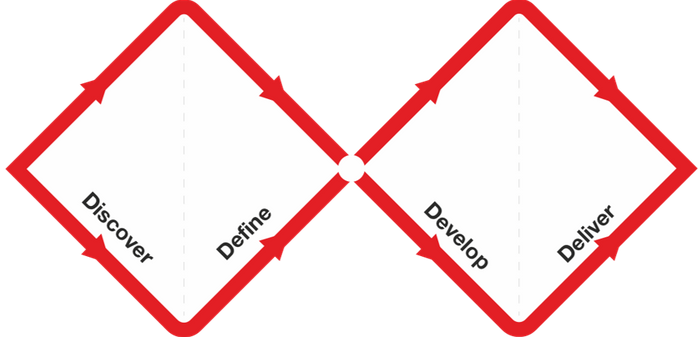Data Storytelling and Design Thinking
There are two main reasons why we would engage in data storytelling: either looking at our own data and thinking about what we can do with it, or presenting a data story to others. Lately, I've been thinking a lot about the latter, and how standing up and presenting a data story to an audience relates to design thinking principles, specifically the 'Double Diamond' from the British Design Council in 2005 (see below).
When we are presenting a data story to someone else, there are four main stages that we go through - the first two are in the analysis and prioritising of the message, and the second two are the development and delivery of the data story itself.
- First we think divergently and discover what trends and insights are in the data. We are curious, we think about all the possibilities, look for data that proves and disproves what we notice, and we curate a list of insights and trends.
- Second we start to define our priorities. We think about what is most urgent and important from our list of trends and insights, and consider which are the key messages that we will want to convey to our audience in our data story.
- Next, we develop the data story that we intend to deliver. We think about the main insight that we want to share, and how best to share it. We think divergently and consider our audience's needs and skills and plan accordingly.
- Finally, we converge our thinking when we deliver the data story to our audience. We think about the manner by which we do this, the language we use and the tone that we choose.
As you can see, these stages fit very closely with the design thinking double diamond: diverge, converge, diverge, converge. I love the double diamond, and I think it's a handy way to conceptualise data storytelling.

Image from: https://www.designcouncil.org.uk/our-resources/framework-for-innovation/
Written by Dr Selena Fisk.
Dr Selena Fisk is a data expert and consultant who is passionate about helping others sort through the numbers to tell the real stories and lead positive change. She fiercely advocates for a world in which we are all data-informed, not data-driven. Selena has mentored executive, senior, and middle leaders, as well as hundreds of others in data storytelling, which has positively impacted the organisations in which they work
